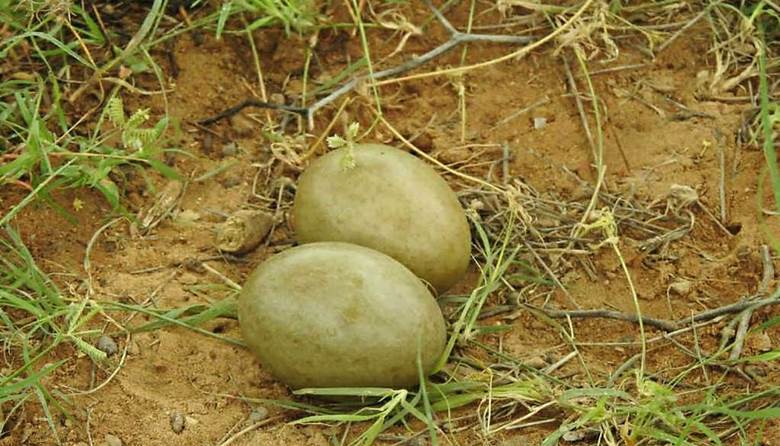Description

Copyright infringement is not intended
Context: The perceived beliefs and recorded observations of egg laying habit of Great Indian Bustard (GIB) have changed after the recent excessive rains in western Rajasthan. The critically endangered bird species has adopted an altogether new behaviour of giving clutch of two eggs at a time after getting additional protein diet during the monsoon season.
Details:
- Environmentalists in Rajasthan have hailed it as a new record, as all experts had been reporting a clutch of single egg by GIB for more than a century.
- Scientists working on ex situ breeding of these endangered birds have discovered the new proclivity in Jaisalmer district’s Desert National Park (DNP).
- Aimed at preserving the GIBs whose population has reduced to less than 150 in the wild, the breeding project focuses on spatial prioritisation, risk characterisation and conservation management with the endangered species.

Great Indian Bustard (GIB):
- GIB is one of the most critically threatened species in India, with less than 150 birds left in the wild.
- GIBs are one of the heaviest flying birds in India.
- Experts say only two districts in Rajasthan — Jaisalmer and Barmer — have a breeding GIB population in the wild.
- The bird can also be found in very small numbers in Gujarat, Madhya Pradesh, Karnataka, Maharashtra and Andhra Pradesh.

Steps taken by the Government for protection of Great Indian Bustards in the country:
- A site for establishment of a Conservation Breeding Centre for the Great Indian Bustard has been identified at Kota District, Rajasthan, under the project ‘Habitat Improvement and Conservation Breeding of Great Indian Bustard-an integrated approach’.
- A satellite conservation breeding facility with incubator, hatcher, chick rearing and housing for captive birds has been set up at Sam, Jaisalmer, Rajasthan.
- The Great Indian Bustard is listed in Schedule-I of the Wild Life (Protection) Act, 1972, thereby, according it highest degree of legal protection from hunting.
- Important habitats of Great Indian Bustards are designated as National Parks/Sanctuaries for their better protection.
- The species has been identified for conservation efforts under the component ‘Species Recovery Programme’ of the Centrally Sponsored Scheme (CSS)-Development of Wildlife Habitat.
- The Ministry with financial support from National Authority for Compensatory Afforestation Funds has sanctioned an outlay of Rs. 33.85 crores for the duration of five years for the programme ‘Habitat Improvement and Conservation Breeding of Great Indian Bustard-an integrated approach’ to build up captive population of Great Indian Bustard.
- Ministry has also constituted a Task Force for suggesting Eco- friendly measures to mitigate impacts of power transmission lines and other power transmission infrastructures on wildlife including the Great Indian Bustard.
- The Great Indian Bustard has been included in the Appendix I of Convention on Migratory Species (CMS) of the basis of proposal submitted by India. It was also the mascot of the prestigious 13th CMS Conference of Parties held in Gandhinagar giving wider publicity for the conservation of the species.
https://epaper.thehindu.com/Home/ShareArticle?OrgId=GB1A5T1QK.1&imageview=0













